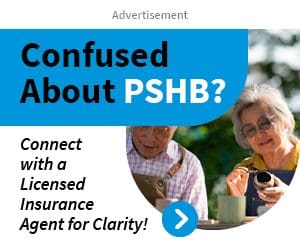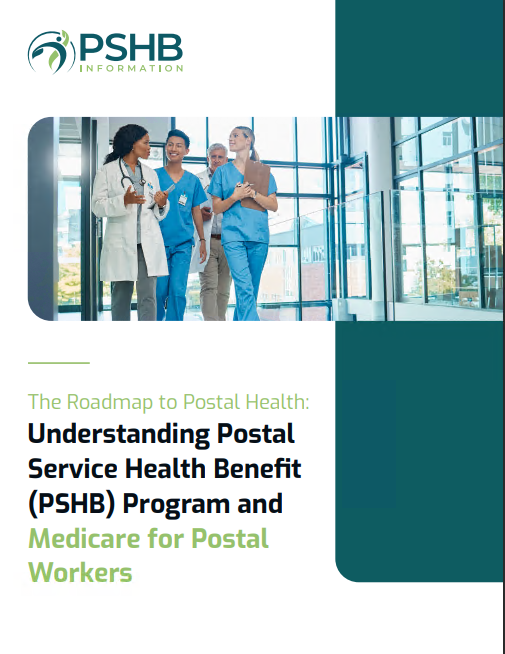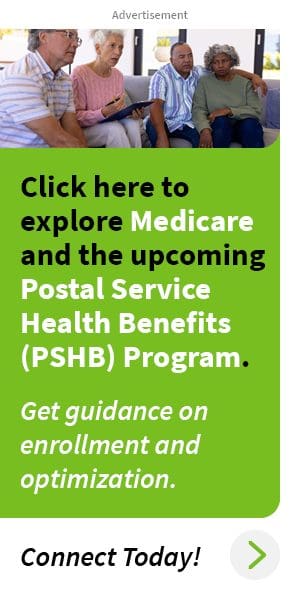Key Takeaways:
- The new Postal Service Health Benefits (PSHB) Program will integrate with Medicare starting January 1, 2025, providing a seamless transition for postal retirees.
- Understanding the enrollment process and maximizing benefits under the PSHB and Medicare can ensure better health coverage for postal retirees.
Postal Retirees, Let’s Chat About PSHB and Medicare and How They Work Together
The upcoming changes in health benefits for postal retirees bring about the need for clarity and preparation. Starting January 1, 2025, the Postal Service Health Benefits (PSHB) Program will be in effect, and it will work closely with Medicare to provide comprehensive health coverage. Here’s a detailed look at what postal retirees need to know about PSHB and Medicare and how they complement each other.
What’s New with PSHB? Let’s Break It Down
The PSHB Program, established under the Postal Service Reform Act (PSRA) of 2022, is set to replace the current Federal Employees Health Benefits (FEHB) Program for postal employees, retirees, and their families. This new program will be administered by the Office of Personnel Management (OPM) and aims to provide health insurance coverage specifically tailored to the postal community. The main goal is to create a sustainable, financially viable health benefits program that integrates effectively with Medicare.
By focusing exclusively on postal employees and retirees, PSHB is designed to address specific needs within this community. This tailored approach is expected to result in more relevant and efficient health coverage options. Additionally, the separation from the broader FEHB Program allows for more direct management and oversight, potentially leading to better service and support for enrollees.
PSHB and Medicare: A Dynamic Duo for Your Health
One of the key aspects of the PSHB Program is its integration with Medicare. For postal retirees who are eligible for Medicare, the PSHB plans will coordinate benefits with Medicare Part A (hospital insurance) and Part B (medical insurance). This integration ensures that retirees receive comprehensive coverage, reducing out-of-pocket costs and streamlining the benefits process. Additionally, PSHB plans will include Medicare Part D prescription drug coverage, ensuring that retirees have access to necessary medications.
The integration with Medicare aims to optimize healthcare delivery by leveraging the strengths of both programs. Medicare provides a solid foundation of hospital and medical coverage, while PSHB plans offer additional benefits and coverage options. This dual approach is designed to provide more comprehensive healthcare coverage, addressing potential gaps and ensuring that retirees have access to the care they need without excessive financial burden.
Switching from FEHB to PSHB: What You Need to Know
The transition from FEHB to PSHB will be significant, as all postal employees, retirees, and eligible family members will need to enroll in PSHB plans during the Open Season in late 2024. It’s important to note that those currently covered under FEHB will not lose their coverage during this transition. However, retirees must actively choose a PSHB plan to ensure continuous coverage starting January 1, 2025. Understanding the enrollment process and the specific plan options available will be crucial for a smooth transition.
Transitioning to a new health benefits program can seem daunting, but preparation and understanding the process can ease this transition. USPS and OPM are expected to provide ample resources and support to help retirees make informed decisions. It is advisable to review all available plan options, attend informational sessions, and seek assistance from licensed insurance agents if needed. Taking these steps can ensure a seamless transition and continued health coverage without interruptions.
Medicare Part B Essentials for Postal Retirees
Medicare Part B enrollment is a critical component for postal retirees under the new PSHB Program. Retirees who are eligible for Medicare must enroll in Part B to maintain their PSHB coverage. This requirement aims to coordinate benefits effectively, leveraging Medicare to cover primary healthcare costs while PSHB provides additional coverage. Enrolling in Part B during the Special Enrollment Period (SEP) can help avoid late enrollment penalties and ensure seamless integration of benefits.
Understanding the specifics of Medicare Part B is essential for postal retirees. Part B covers a wide range of services, including doctor visits, outpatient care, preventive services, and some home health services. The enrollment process involves signing up during the designated enrollment period and paying a monthly premium. By ensuring timely enrollment in Part B, retirees can maximize their healthcare benefits and avoid potential financial penalties.
Getting Started with PSHB: A Simple Guide
To get started with PSHB, postal retirees should first review the fact sheets and resources provided by USPS and OPM. These materials offer detailed information on eligibility, plan options, and enrollment procedures. During the Open Season from November 11 to December 9, 2024, retirees must select a PSHB plan. It’s essential to compare the available plans, understand the benefits, and choose the one that best meets their healthcare needs. Additionally, staying informed about any updates or changes through official USPS and OPM channels will help retirees navigate the process.
The initial steps in transitioning to PSHB involve thorough research and preparation. Retirees should begin by gathering all necessary information about the new program and reviewing their current health needs. Comparing different PSHB plans can provide insights into the benefits and coverage options available. Additionally, participating in informational webinars and reading official communications can further clarify the process and assist in making informed decisions.
Making the Most of Your Benefits as a Postal Retiree
Maximizing benefits under the PSHB and Medicare programs requires careful planning and understanding of the available options. Retirees should take advantage of preventive services covered by Medicare, such as annual wellness visits and screenings, to maintain their health. Additionally, understanding the formulary (list of covered drugs) under the PSHB plan’s Medicare Part D coverage can help manage prescription costs. Utilizing the coordination of benefits between Medicare and PSHB can also minimize out-of-pocket expenses and ensure comprehensive coverage.
Proactively managing health benefits involves staying informed and utilizing available resources. Retirees should regularly review their coverage options and take advantage of preventive care services. Keeping track of covered medications and understanding any changes to the formulary can prevent unexpected expenses. By actively engaging with their health benefits, retirees can ensure they receive the best possible care and maintain their overall well-being.
Your Questions About PSHB and Medicare Answered
As the PSHB Program rolls out, retirees are likely to have many questions. Common inquiries include the impact on current benefits, the specifics of Medicare Part B enrollment, and how to navigate the transition period. USPS and OPM provide FAQs and support resources to address these questions. Retirees can also reach out to licensed insurance agents for personalized assistance and clarification on how the new program affects their individual circumstances.
Addressing common questions and concerns is a vital part of the transition process. USPS and OPM are committed to providing clear and comprehensive information to help retirees understand the new program. Retirees should not hesitate to seek assistance and ask questions to ensure they have a complete understanding of their new benefits. This proactive approach can prevent confusion and ensure a smooth transition to PSHB.
Stay Updated: Key Resources for Postal Retirees
Staying informed is crucial during this transition period. Retirees should regularly check USPS and OPM websites for updates, attend informational webinars, and read newsletters. These resources provide the latest information on the PSHB Program, enrollment deadlines, and any changes in benefits. By staying proactive and informed, postal retirees can ensure they make the best decisions for their health coverage.
Continuous learning and staying updated are essential for navigating the transition to PSHB. Official websites and communications from USPS and OPM will provide the most accurate and timely information. Participating in educational sessions and reading newsletters can further enhance understanding and preparedness. By utilizing these resources, retirees can confidently transition to the new health benefits program and ensure continuous, comprehensive coverage.
Looking Ahead with Confidence
The integration of the PSHB Program with Medicare represents a significant shift in how postal retirees will receive their health benefits. Understanding these changes, preparing for the transition, and leveraging available resources will be key to navigating this new landscape successfully. Postal retirees can look forward to a streamlined, efficient health benefits system that supports their healthcare needs well into the future.
The future of postal retirees’ health benefits looks promising with the introduction of PSHB. By taking the time to understand the new program and preparing for the transition, retirees can ensure they receive comprehensive and efficient health coverage. Staying informed and utilizing available resources will be crucial for navigating this change and maintaining access to quality healthcare.
Contact Information:
Email: [email protected]
Phone: 4075554567






